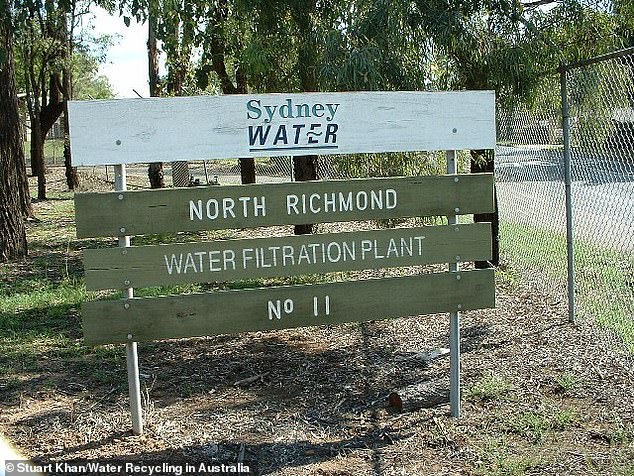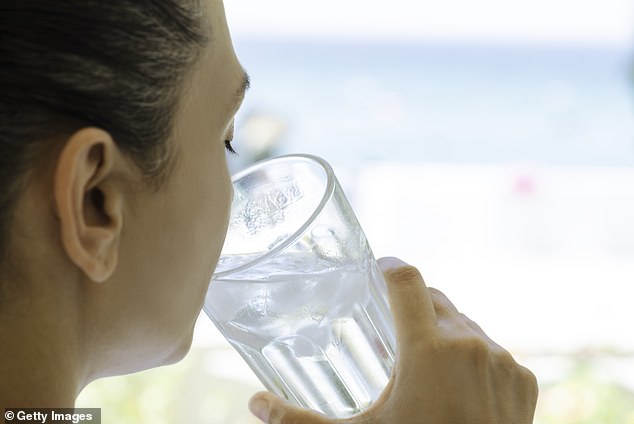Nearly two million Australians may have been exposed to carcinogenic chemicals detected in tap water, major research has found.
It comes amid growing fears about the long-term impact of so-called “permanent chemicals”, which can remain in the human body for a lifetime.
Over the past six months, the World Health Organization has concluded that the ever-chemical perfluorooctanoic acid (PFOA) is carcinogenic to humans, while the U.S. The Environmental Protection Agency found that there was no safe level of PFOA or perfluorooctane sulfonate (PFOS) in the water.
But PFOA, which experts believe causes cancer, is currently allowed in Australia’s drinking water at a level 140 times higher than the maximum the United States will allow.
An important investigation, carried out by the Sydney Morning Herald, found that the chemicals were found in tap water in every state and territory in the country since 2010, affecting up to 1.8 million people.
Nearly two million Australians may have been exposed to carcinogenic chemicals detected in tap water, major research has found.

A major investigation, carried out by the Sydney Morning Herald, found the chemicals were found in tap water in every state and territory across the country, affecting up to 1.8 million people (pictured: plant (North Richmond water leak test where permanent chemicals were detected in January). )
The research, which analyzed the latest publicly available data from 2011 and more recent surveys, found that Chemicals have been detected in tap water in the Sydney suburbs of North Richmond, Quakers Hill, Liverpool, Blacktown, Emu Plains and Campbelltown.
They have also been found in other parts of New South Wales, including Newcastle, Bathurst, Wagga Wagga and Jervis Bay, the latter last October.
The contaminants were discovered in Canberra, parts of inner-city Melbourne, inner-city Adelaide, Cairns and Gladstone in Queensland, the outer suburbs of Hobart and parts of the Northern Territory.
While the last public surveys were conducted more than a decade ago, several water providers have conducted their own tests in recent years.
Alarmingly, these studies found that the chemicals are still present in some of the same places, sometimes at even higher concentrations.
One of the most worrying readings occurred in 2020 in the popular tourist destination of Norfolk Island, 1,600 kilometers northeast of Sydney, where Chemicals were discovered at 635 times Australia’s safe limit and thousands of times the US limit.
The currently closed water well where the contaminants were found supplied the hospital, fire station and public restrooms.
Other worrying readings where water supplies were subsequently shut off were the Queensland towns of Ayr, Bundaberg and Macknade.

They were also found in other parts of New South Wales including Newcastle, Bathurst, Wagga Wagga and Jervis Bay (pictured), the latter last October.
In the United States, the maximum limits for PFOA and PFOS in drinking water are four parts per billion, while in Australia guidelines allow 560 parts per billion for PFOA and 70 parts per billion for PFOS.
The 23 affected Australian drinking water suppliers told the Sydney Morning Herald their water is safe because the levels detected are within Australia’s drinking water guidelines.
But Dr Nicholas Chartres, senior researcher at the University of Sydney’s faculty of medicine and health, said people in Australia were at the same risk as those in the United States.
“We are not different physiologically,” Dr. Chartres told the newspaper.
“We should be concerned that we are potentially exposed to those health effects.”
Dr Chartes called on the Australian government to bring the country into line with new US regulations.
Meanwhile, Dr Mariann Lloyd-Smith, a toxic chemicals advocate who has served on United Nations expert committees, criticized Australia’s permanent chemical limits as a “national disgrace”.
Friends of the Earth’s Anthony Amis has been analyzing the spread of permanent chemicals for years.

All 23 affected Australian drinking water suppliers told the Sydney Morning Herald their water is safe because the levels detected are within Australia’s drinking water guidelines (file image)
“Some of the communities would have been drinking PFAS at dangerous levels for years, and possibly decades,” Mr Amis said.
“Why have people been exposed to these levels, without regulators knowing until very recently?”
PFOS was detected in North Richmond in January. It is the only site where Sydney Water regularly tests for PFOS.
But a Sydney Water spokesperson said there were no known PFAS hotspots in its drinking water catchments.
“Sydney Water regularly consults with WaterNSW, our raw water supplier, and NSW Health to assess any potential PFAS risks to Sydney’s drinking water supply,” they said.
The National Health and Medical Research Council, which develops Australia’s Drinking Water Guidelines, is reviewing its recommendations for PFAS in the wake of the United States’ decision to reduce its allowable levels.
“The independent review will consider recent guidance and reviews from national and international jurisdictions and determine whether they are appropriate to adopt or adapt to Australia,” a Department of Health spokesperson said.
Forever chemicals became ubiquitous since their development in the 1940s, making jackets waterproof, carpets stain-resistant, frying pans non-stick, and used in firefighting foam.
In 2023, multinational manufacturing company 3M reached a $10.3 billion settlement with US public water agencies against more than 4,000 lawsuits filed against 3M and other chemical companies.

